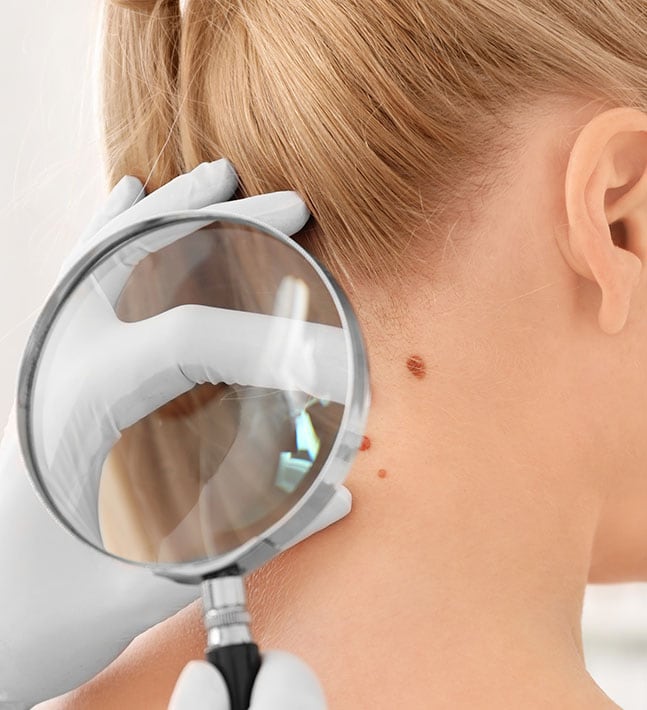Individuals that have concerns over an unsightly mole may choose to have it removed by a cosmetic surgeon. Cosmetic mole removal is a procedure to remove bothersome moles that are thought to be too large, dark, or bumpy. Dr. Connors and Dr. Hart take great care to preserve the skin around the mole in question and minimize scarring as much as possible in order to achieve a natural result. It is recommended that patients consult with a dermatologist first to ensure that the mole in question is non-cancerous.
- Recovery Time: 1-2 Weeks
- Procedure Recovery Location: Outpatient

Mole Removal FAQs
Common Moles Removed?
If a mole is truly bothersome, it may be considered for mole removal. This particular mole may be dark, bumpy, large or simply annoying. From a health standpoint, any mole that is “changing” should be removed. This includes those with irregular borders, mixed pigmentation, and those that are crusted, bleeding, or growing.
Will I Have A Bad Scar?
Unfortunately, scarring is a part of mole removal surgery. For this reason, patients worried about the scarring should seek out a plastic surgeon. Trained surgeons understand not only how to safely remove the mole, but how to incorporate techniques to minimize scarring for the best result.
Will Insurance Pay?
Not if the mole removal is performed purely for cosmetic reasons. However, if the mole is believed to be cancerous, then insurance may cover a portion of the removal. We suggest having the mole assessed by a dermatologist. If mole removal is recommended, this can be addressed with your insurance provider prior to seeking out a plastic surgeon.


